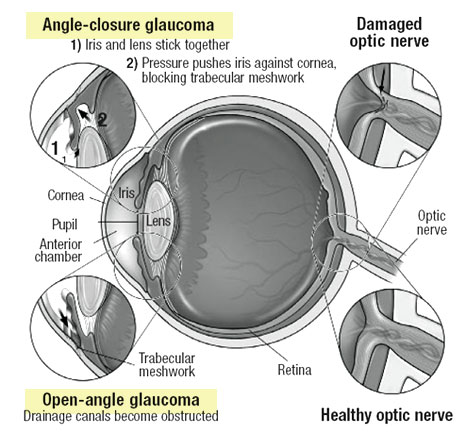Recognizing the Different Vision Modification Procedures Available for Clearer Sight
In the realm of vision improvement procedures, a wide range of choices exist to resolve refractive errors and offer people with more clear sight. From the widely acknowledged LASIK surgical procedure to less intrusive treatments like PRK and implantable lenses, the area of ophthalmology supplies a series of techniques tailored to fit various needs and preferences. Each treatment features its very own collection of factors to consider, advantages, and potential risks. Understanding the nuances of these vision modification approaches is essential for making notified choices concerning one's aesthetic health. Let's discover the ins and outs of these procedures and lost light on the course to achieving boosted vision quality.
LASIK Surgical Procedure
LASIK surgical procedure is a typical refractive procedure utilized to correct vision troubles such as astigmatism, farsightedness, and nearsightedness. This medical technique, which stands for Laser-Assisted in Situ Keratomileusis, aims to improve the cornea to improve just how light is concentrated on the retina, ultimately boosting vision clarity.
Among the key benefits of LASIK surgical procedure is the rapid renovation in vision experienced by patients. Many people notice a considerable enhancement in their vision instantly after the treatment. Furthermore, many individuals report very little discomfort and discomfort during the surgical treatment and recuperation period. The healing time for LASIK is relatively fast, with lots of people returning to their day-to-day tasks within a day or 2 post-operation. In general, LASIK surgery is a preferred selection for people looking for a long-term option for their vision troubles.
PRK Treatment
While likewise a common refractive treatment, the PRK (Photorefractive Keratectomy) method differs from LASIK surgical treatment in its method to fixing vision issues. In PRK, as opposed to producing a flap on the cornea, the external layer of the cornea, called the epithelium, is completely eliminated. This allows the laser to reshape the cornea to deal with refractive errors such as farsightedness, nearsightedness, and astigmatism straight externally.

Despite the longer healing time, PRK can produce superb lead to vision improvement, making it an important option for those that may not appropriate candidates for LASIK surgical treatment.
Implantable Lenses
In comparison to PRK where the cornea is improved straight, implantable lenses provide an additional method for fixing vision by putting synthetic lenses inside the eye. This treatment is especially helpful for individuals with high degrees of farsightedness, astigmatism, or nearsightedness who may not appropriate candidates for laser surgical procedures like LASIK or PRK.
Implantable lenses, additionally known as phakic intraocular lenses, job by supplementing the eye's natural lens with a man-made one. glaucoma service near me. These lenses can be positioned before the natural lens (anterior chamber) or behind the iris and before the natural lens (posterior chamber) By readjusting the power and positioning of these lenses, eye doctors can successfully fix refractive errors and boost visual acuity
One benefit of implantable lenses is that they are removable and exchangeable, offering flexibility for future changes. As with any kind of surgical treatment, there are dangers involved, such as infection or cataract development. Clients thinking about implantable lenses should speak with an eye Visit Your URL treatment expert to identify one of the most appropriate choice based on their specific requirements go to this website and eye wellness.
Corneal Rings
Corneal rings, additionally called intracorneal ring sectors, are small, clear devices put into the cornea to deal with vision distortions such as keratoconus. Keratoconus is a problem where the cornea thins and protrudes exterior, causing vision to end up being distorted. The insertion of corneal rings helps to squash the cornea, enhancing visual skill and lowering the uneven astigmatism caused by keratoconus.
The treatment for placing corneal rings is fairly fast and minimally invasive, typically performed as an outpatient procedure. Throughout the surgery, the ophthalmologist makes a little laceration in the cornea and inserts the rings at a certain deepness. Once in position, the rings help to reshape the cornea, supplying a smoother surface area for light to get in the eye, which can result in clearer vision.
Corneal rings are considered a reversible treatment, as they can be removed or changed if necessary. glaucoma service near me. While they might not entirely eliminate the requirement for glasses or get in touch with lenses, corneal rings can significantly enhance vision quality and overall visual comfort for people with keratoconus or various other corneal abnormalities
Refractive Lens Exchange
Complying with the improvement of corneal irregularities with procedures like corneal rings, one more vision modification strategy that can resolve refractive errors is Refractive Lens Exchange (RLE) RLE is an operation that entails changing the eye's all-natural lens with a fabricated intraocular lens (IOL) to deal with refractive mistakes such as farsightedness, nearsightedness, and presbyopia. This procedure is especially valuable for individuals who may not be suitable prospects for procedures like LASIK or PRK due to factors such as thin corneas or high refractive mistakes.

Verdict
In final thought, there are different discover this info here vision modification procedures offered to help individuals achieve clearer sight. LASIK surgical treatment, PRK procedure, implantable lenses, corneal rings, and refractive lens exchange are all options that can attend to various vision problems.
In the world of vision correction procedures, a plethora of alternatives exist to attend to refractive errors and provide people with more clear sight.LASIK surgery is a common refractive treatment utilized to fix vision problems such as farsightedness, nearsightedness, and astigmatism.While also an usual refractive procedure, the PRK (Photorefractive Keratectomy) technique varies from LASIK surgical treatment in its method to correcting vision troubles.Complying with the improvement of corneal abnormalities with procedures like corneal rings, an additional vision adjustment strategy that can attend to refractive errors is Refractive Lens Exchange (RLE) LASIK surgical procedure, PRK procedure, implantable lenses, corneal rings, and refractive lens exchange are all alternatives that can deal with different vision concerns.